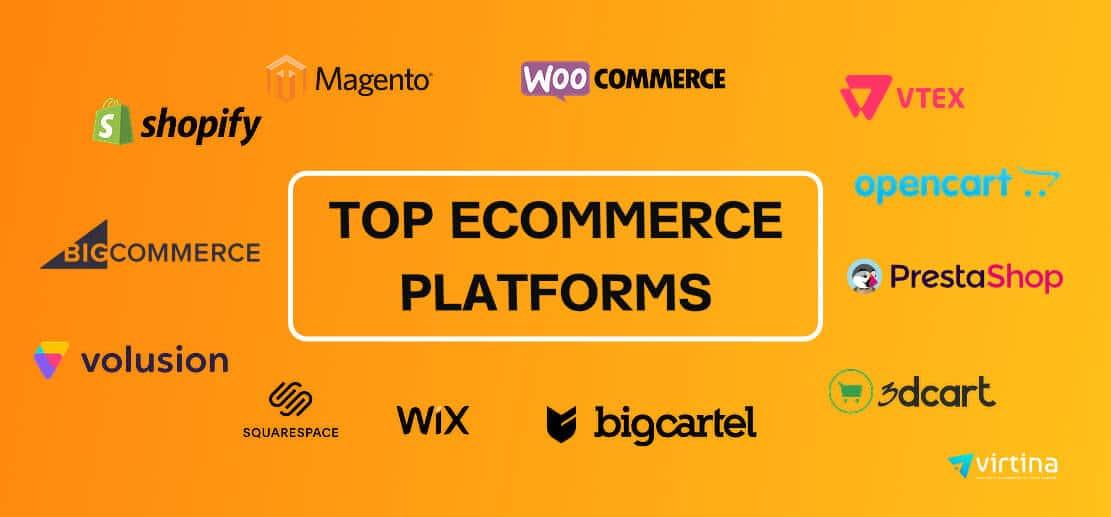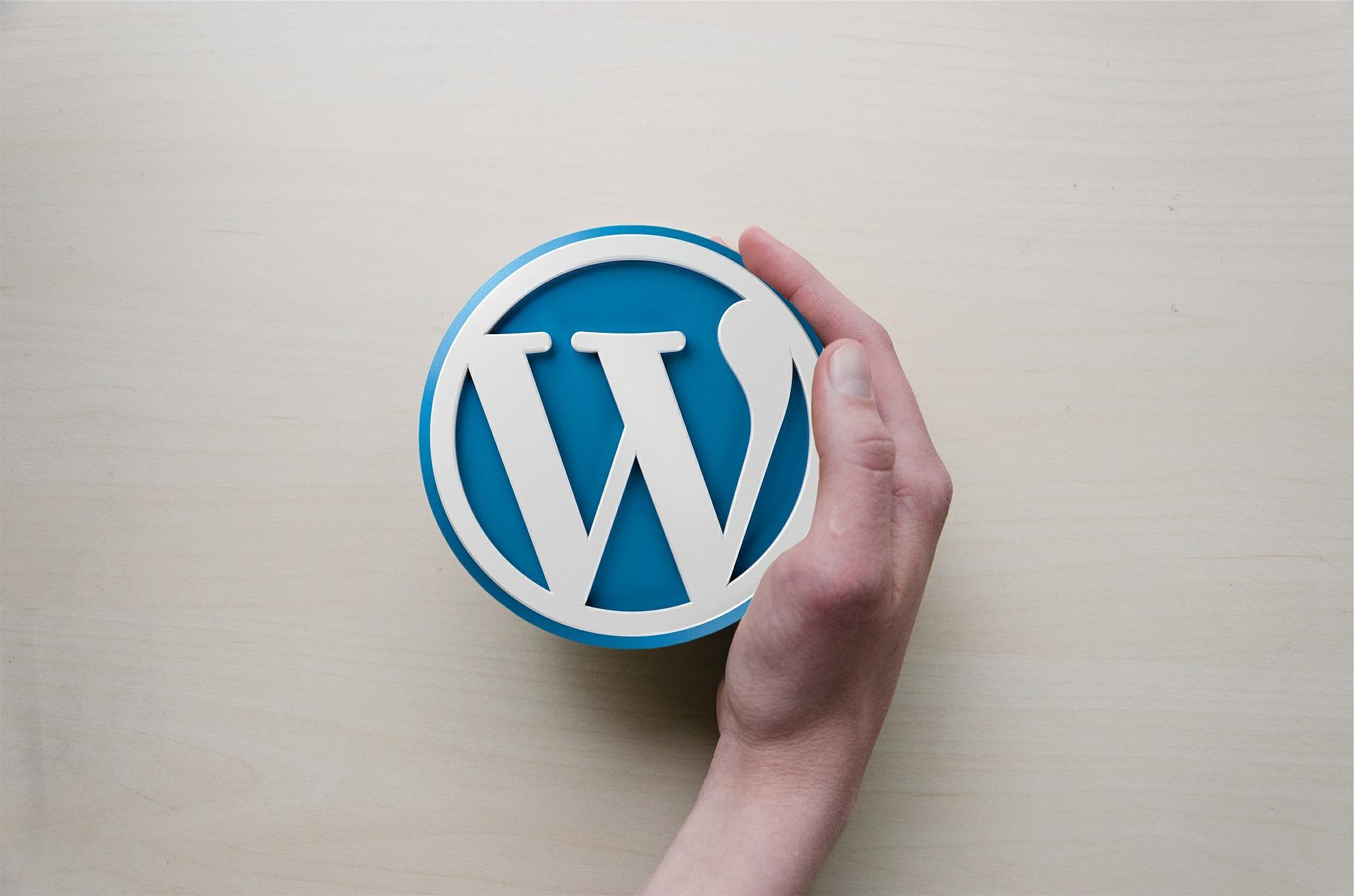Are you ready to take your online business to the next level in 2025? With the rapid evolution of technology and changing consumer behaviors, choosing the right eCommerce platform can make all the difference between a booming business and a stagnant one. Whether you’re a budding entrepreneur or a seasoned seller looking to upgrade, the landscape of eCommerce is more vibrant and competitive than ever. In this article, we’re diving into the best eCommerce platforms and software that are set to lead the charge this year. From customizable solutions to user-pleasant interfaces, we’ve got you covered on what to look for and why these platforms are the cream of the crop. So grab a cup of coffee, settle in, and let’s explore the game-changers that can help you thrive in the digital marketplace!
Exploring the Top Ecommerce Platforms of 2025
As we dive into 2025,the landscape of ecommerce is rapidly evolving,with new platforms emerging and existing ones enhancing their features to cater to businesses of all sizes. Whether you’re a budding entrepreneur or a seasoned retailer, choosing the right ecommerce platform is crucial for your success.
here are some of the top ecommerce platforms you should consider:
- Shopify: Renowned for its user-friendly interface,Shopify continues to dominate the market. With its extensive app store and customizable themes, it’s ideal for those looking to create a unique online store without extensive coding knowledge.
- WooCommerce: For WordPress users, WooCommerce remains a powerful choice. Its versatility and scalability make it perfect for small to large businesses, allowing for seamless integration with existing sites.
- BigCommerce: This platform stands out with its built-in features, reducing the need for third-party apps. It’s particularly beneficial for larger enterprises aiming for high-volume sales.
- Magento: Known for its robust capabilities, Magento is perfect for businesses with complex needs. While it has a steeper learning curve, the customization possibilities are limitless.
- Squarespace: Ideal for those who prioritize design, Squarespace offers stunning templates and an intuitive drag-and-drop interface, making it easy to create visually captivating online stores.
In addition to these popular platforms, it’s essential to evaluate their specific features:
| Platform | Best For | Key Features |
|---|---|---|
| Shopify | Small to Medium businesses | App Integration, Payment Gateways |
| WooCommerce | WordPress Users | Customization, SEO Tools |
| BigCommerce | high-Volume Sellers | Multi-Channel Selling, Analytics |
| Magento | Large Enterprises | Advanced Customization, Performance optimization |
| Squarespace | Design-Focused Brands | Beautiful Templates, Easy Editing |
When selecting a platform, consider your business model, target audience, and growth potential. Evaluate factors such as cost, ease of use, and customer support to find the best fit for your needs. Remember,the right ecommerce platform not only enhances your online presence but can also significantly impact your sales performance.
As the ecommerce sector continues to innovate, stay ahead of the competition by leveraging the latest tools and technologies offered by these platforms. Your choice today could shape the future of your business tomorrow.
Key Features to Look for in an Ecommerce Solution
When choosing the right ecommerce solution, it’s essential to consider features that will not only support your current needs but also grow with your business. A robust platform should offer a seamless user experience,enabling you to focus on what really matters: driving sales and enhancing customer satisfaction.
User-Friendly Interface: A clean and intuitive interface is crucial for both you and your customers.Look for platforms that prioritize easy navigation and a straightforward checkout process. This reduces cart abandonment and enhances user engagement. Popular platforms often have customizable templates that allow you to brand your store effectively.
Mobile Responsiveness: With a significant number of shoppers using mobile devices, your ecommerce solution must be mobile-friendly. Responsive design ensures that your site performs well on various devices, providing a consistent shopping experience whether customers are on a phone, tablet, or desktop.
Payment Gateway Integration: Customers expect a variety of payment options. Ensure that your chosen platform supports multiple payment gateways such as PayPal,Stripe,and credit card processors. This flexibility not only enhances customer trust but also helps you cater to a wider audience.
SEO-Friendly features: Having an SEO-optimized ecommerce platform is vital for driving organic traffic. Look for features like customizable URLs, meta tags, and alt text for images. These tools help improve your site’s visibility on search engines, making it easier for potential customers to find your products.
Inventory Management: A comprehensive inventory management system will help you track stock levels, manage orders, and forecast demand. Look for solutions that provide real-time inventory updates and alerts to prevent stockouts or overstock situations.
Analytics and Reporting: Data-driven decisions are key to a triumphant ecommerce business. Choose a platform that offers robust analytics and reporting tools. These features should help you track sales performance, customer behavior, and marketing effectiveness, enabling you to refine your strategies based on real insights.
Customer Support: great customer support can save you time and frustration.Opt for a solution that provides 24/7 support through various channels – whether it’s live chat, email, or phone – ensuring that assistance is available whenever you need it.
| Feature | Importance | benefits |
|---|---|---|
| User-Friendly Interface | High | Reduces cart abandonment, enhances engagement |
| Mobile Responsiveness | High | Consistent experience across devices |
| Payment Gateway Integration | Medium | Increases trust, caters to a larger audience |
| SEO-Friendly Features | High | Improves visibility on search engines |
| analytics and Reporting | High | Informed decision-making based on data |
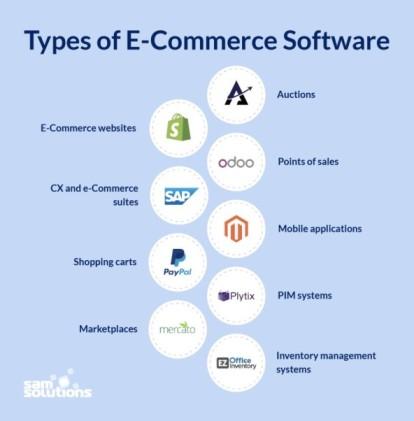
How to choose the Right Ecommerce Software for Your Business
Choosing the right ecommerce software is crucial for the success of your online business. With so many options available, it can be overwhelming to determine which platform will best meet your unique needs. Here are some essential factors to consider:
- Scalability: Ensure the software can grow with your business. You want a platform that can handle increased traffic and sales without compromising performance.
- User-Friendliness: Look for an intuitive interface that allows you and your team to easily manage products,orders,and customer interactions.
- Customization: A good platform should offer customization options, allowing you to tailor the look and functionality to fit your brand.
- Payment Options: Check if the software supports multiple payment gateways, making it easier for your customers to complete transactions.
- SEO Features: Your ecommerce software should have built-in SEO capabilities to help improve your site’s visibility on search engines.
- Customer Support: Reliable customer support is essential. Opt for platforms that offer 24/7 assistance, in case you run into any issues.
Another vital consideration is the cost of the software. While you may be tempted to choose a low-cost option, remember that you often get what you pay for. Look for a balance between affordability and the features that will drive your business forward. Here’s a quick comparison of some popular options:
| Platform | Starting Price | Key Features |
|---|---|---|
| Shopify | $29/month | Easy setup, mobile-friendly, extensive app store |
| WooCommerce | Free (with hosting costs) | Highly customizable, great for WordPress users |
| BigCommerce | $29.95/month | No transaction fees, built-in features for growth |
| Magento | Free (Enterprise pricing varies) | powerful, scalable, best for large businesses |
Lastly, consider the integration capabilities of the software. Your ecommerce platform should seamlessly integrate with your existing tools, such as inventory management systems, email marketing solutions, and CRM platforms. This connectivity is vital for maintaining a smooth operation and enhancing customer experience.
By taking these factors into account, you can confidently choose the ecommerce software that aligns with your business goals and helps you build a successful online presence.
The Rise of Artificial Intelligence in Ecommerce Platforms
In recent years, artificial intelligence has become a game-changer in the ecommerce landscape, enhancing customer experiences and streamlining operations for businesses. As these platforms evolve, their incorporation of AI technologies is not just a trend but a necessity for those looking to stay competitive.
AI-powered tools are revolutionizing how businesses interact with their customers. With the ability to analyze vast amounts of data, these technologies enable ecommerce platforms to offer personalized shopping experiences. Shoppers are greeted with tailored recommendations based on their browsing history, purchase patterns, and even affinities detected through machine learning algorithms.
Key features driving this growth include:
- Chatbots and Virtual Assistants: These AI-driven tools provide instant support, answering customer queries and assisting with product selection, thereby enhancing customer satisfaction.
- Predictive Analytics: By forecasting trends and consumer behavior, ecommerce platforms can adjust inventory and marketing strategies to meet demand effectively.
- Dynamic Pricing: AI can analyze competitor prices in real-time, allowing businesses to adjust their pricing strategies, optimizing both sales and profit margins.
Moreover,AI’s role in marketing cannot be overstated. With refined algorithms, platforms can drive targeted advertisements that resonate with specific demographic groups. Consequently, businesses can maximize their ROI on marketing spend, ensuring they communicate effectively with their intended audience.
| AI Feature | Benefit |
|---|---|
| Customer Segmentation | Improved targeting and personalization |
| Inventory Management | Reduced waste and optimized stock levels |
| Fraud Detection | Enhanced security and trust for customers |
Investing in these technologies is not merely about keeping up with the competition; it’s about leveraging the power of AI to transform business models. As we look towards 2025, the ecommerce platforms that prioritize AI integration will not only attract more customers but will also foster loyalty through superior experiences.This shift will undeniably set the standard for what consumers expect from online shopping.
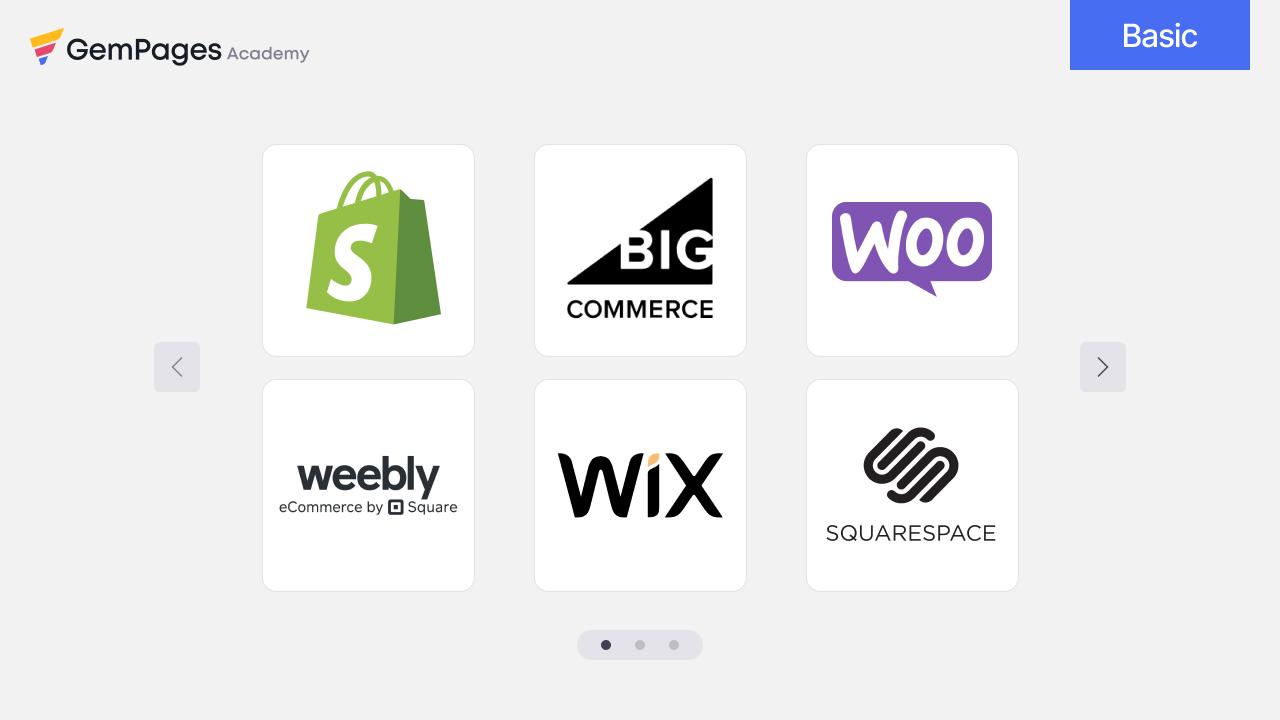
Best Platforms for Small Businesses: Thrive in 2025
In 2025, small businesses are no longer bound by geographical limitations thanks to cutting-edge ecommerce platforms. These tools empower entrepreneurs to reach customers around the globe, streamline operations, and elevate user experiences. Choosing the right platform can be a game-changer, ensuring that you not only survive but thrive in a competitive landscape.
Here are some standout options that cater specifically to the needs of small businesses:
- Shopify: Known for its user-friendly interface and robust features, Shopify offers everything from customizable templates to integrated payment processing. Perfect for those who want to get started quickly without sacrificing quality.
- WooCommerce: If you’re familiar with WordPress, this plugin is a natural fit. It allows for extensive customization and scalability, making it ideal for businesses that anticipate growth.
- bigcommerce: This platform is designed for serious sellers with high-volume sales.BigCommerce offers advanced features like multi-channel selling and seamless integration with various payment gateways.
- Squarespace: With its stunning design templates, Squarespace is perfect for creative businesses. It combines aesthetics with functionality, ensuring a visually appealing online presence.
- Wix: For those who prioritize ease of use, Wix is a go-to. Its drag-and-drop builder makes it simple to create an online store without prior coding knowledge.
When evaluating these platforms, consider the following factors to find the best fit:
| Feature | Shopify | WooCommerce | BigCommerce |
|---|---|---|---|
| Ease of Use | High | Medium | Medium |
| Customization | Medium | High | Medium |
| SEO Features | Good | Excellent | Good |
| Support | 24/7 | Community-Based | 24/7 |
Integrating the right software solutions can also enhance your business operations. Think about tools that offer:
- Inventory Management: keeping track of stock levels can save you from costly overselling.
- Customer Relationship Management (CRM): Building relationships with your customers is crucial, and a good CRM can help manage interactions effortlessly.
- Email Marketing: Platforms like Mailchimp or Constant Contact can drive engagement and encourage repeat business.
- Analytics Tools: Understanding customer behavior through analytics can inform your marketing strategies and product offerings.
With the right ecommerce platform and software, small businesses can pave their path to success. Adapting to the changing digital landscape is not just beneficial — it’s essential for survival and growth. As you explore your options, remember that the right combination of user experience, functionality, and support can set the stage for unprecedented success in 2025.

Enterprise Solutions: Scaling Your Business with the Best software
Unlocking Business Potential with the Right Ecommerce tools
In the fast-evolving world of ecommerce, having the right software solutions is pivotal for growth and efficiency. As we head into 2025, businesses must leverage platforms that not only support scalability but also enhance the overall customer experience. Here are some of the standout features that leading ecommerce platforms will offer this year:
- Customizable User Experiences: Tailoring the shopping journey is crucial. Platforms now enable businesses to create personalized experiences based on customer data insights.
- Omnichannel Capabilities: Integrating various sales channels ensures customers can shop seamlessly, whether online, in-store, or through mobile apps.
- Advanced Analytics and Reporting: Make data-driven decisions with built-in analytics tools that track customer behavior and sales trends in real-time.
- Robust Security Features: As online transactions increase, so does the need for secure payment gateways and data protection measures.
Top Ecommerce Platforms to Consider
| Platform | Key Features | Best For |
|---|---|---|
| Shopify | Easy setup, 24/7 support, extensive app marketplace | Small to medium-sized businesses |
| WooCommerce | Highly customizable, integrates with wordpress, free plugin | Content-driven businesses |
| Magento | Powerful features, scalability, supports large catalogs | Enterprise-level companies |
| BigCommerce | No transaction fees, built-in SEO features, multi-channel selling | Growing businesses with high sales volume |
Choosing the right platform is just the beginning.To truly maximize your ecommerce potential,consider integrating additional tools such as:
- Email Marketing Software: Tools like Mailchimp or Klaviyo can help nurture leads and foster customer loyalty.
- Customer Relationship Management (CRM) Systems: Solutions such as Salesforce ensure that you maintain strong relationships with your customers.
- Inventory Management Tools: Keep track of stock levels and streamline ordering processes with platforms like TradeGecko.
As you prepare to scale your business in 2025, aligning with the right ecommerce software is essential. Not only does it enhance operational efficiency, but it also allows you to focus on what truly matters: delivering an exceptional shopping experience to your customers.
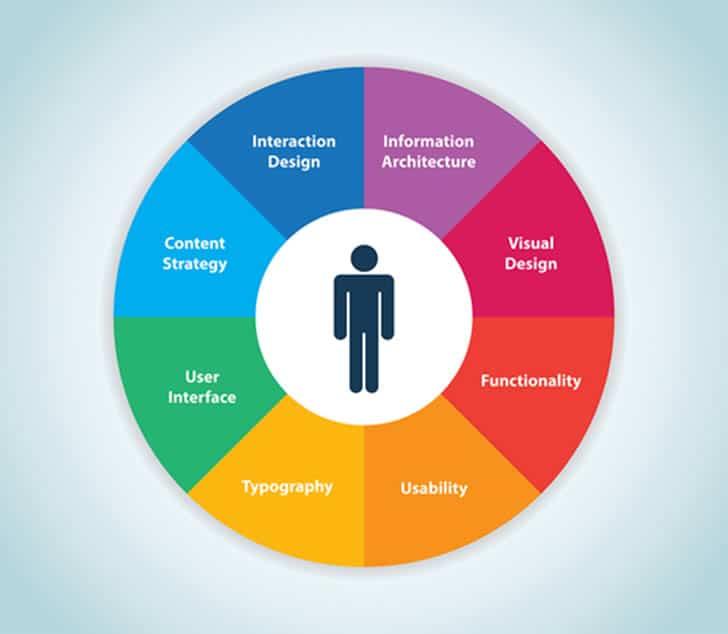
User Experience and Design: Why It Matters in Ecommerce
In the fast-paced world of ecommerce, the difference between a thriving online store and a failed venture frequently enough boils down to one critical factor: user experience and design. A well-crafted user experience (UX) goes beyond aesthetics; it encompasses every interaction a customer has with your platform. From landing pages to checkout processes, each element must be designed with the customer in mind.
consider the following aspects that contribute to a positive user experience:
- Intuitive Navigation: Users should easily find what they are looking for. A streamlined navigation menu allows customers to explore without frustration.
- responsive Design: With many shopping on mobile devices, a responsive design ensures that your site looks and functions beautifully on all screens.
- Fast Load Times: According to studies, even a one-second delay in page loading can lead to significant drops in conversion rates. Speed is essential!
- Visual Appeal: An aesthetically pleasing design captures attention and builds trust, encouraging users to engage with your content and products.
moreover,the checkout experience can make or break a sale. A cumbersome checkout process can lead to cart abandonment, costing businesses valuable revenue. Simplifying this process with clear calls to action and minimal steps can dramatically improve conversion rates. Customers appreciate when they can complete their purchase quickly and without any unnecessary obstacles.
To illustrate, here’s a simple comparison of ecommerce platforms based on their user experience features:
| platform | Navigation | Design Flexibility | Checkout Process |
|---|---|---|---|
| Shopify | Highly intuitive | Extensive themes | streamlined and fast |
| WooCommerce | Customizable menus | Fully flexible | Customizable checkout |
| BigCommerce | Dynamic navigation | Good range of templates | Quick checkout options |
Ultimately, investing in user experience and design isn’t just about making your site look good; it’s about creating a seamless journey for your customers. When users feel valued and understood through every click and scroll, they’re more likely to return and recommend your store to others. The bottom line? A strong focus on UX and design can lead to better customer retention, higher sales, and a more robust brand reputation in the competitive ecommerce landscape.

Payment Processing Made Easy: Top Recommendations
In the fast-paced world of ecommerce, seamless payment processing is crucial for both customer satisfaction and business success. With so many options available, choosing the right payment solution can be overwhelming. Here are some top recommendations that can simplify the payment process and enhance your ecommerce experience.
1. Stripe
Stripe is renowned for its developer-friendly API and extensive features. It’s a great choice for businesses of all sizes, offering:
- Global reach: Accept payments from customers worldwide.
- Customizability: tailor the payment process to fit your brand.
- Robust security: Built-in fraud protection to safeguard your transactions.
2. PayPal
PayPal remains a household name in online payments. Its user-friendly interface and trusted reputation make it an excellent choice for ecommerce platforms. Key benefits include:
- Instant transactions: Quick payment confirmations keep your customers happy.
- Mobile-friendly: Optimized for transactions on mobile devices.
- Easy integration: simple to set up on various ecommerce platforms.
3. Square
Square is not just for brick-and-mortar stores; its ecommerce solutions are robust to! Here’s what you can expect:
- all-in-one solution: Manage inventory, sales, and analytics in one platform.
- Competitive pricing: Transparent fees with no monthly contracts.
- Invoicing capabilities: Easily send invoices for services or products.
Payment Comparison Table
| Payment Processor | Transaction Fees | Key Features |
|---|---|---|
| Stripe | 2.9% + 30¢ per transaction | Customizable API, Global payments |
| PayPal | 2.9% + 30¢ per transaction | Instant payments, Trusted brand |
| Square | 2.6% + 10¢ per transaction | All-in-one dashboard, Invoicing |
4. Authorize.Net
Authorize.Net is a robust payment gateway that has been around for years. It offers:
- Recurring billing: Perfect for subscription-based services.
- Customer support: 24/7 assistance for all your payment needs.
- Extensive reporting: Insights into transaction trends to help you grow your business.
5. Braintree
Braintree, a PayPal service, focuses on mobile and web payment systems. It’s known for:
- Multi-currency support: Great for international businesses.
- Built-in fraud protection: Keep your transactions secure.
- Seamless integration: Works smoothly with a variety of ecommerce platforms.
Choosing the right payment processor is vital for your ecommerce success. With these options, you can ensure a smooth, secure, and efficient payment process that enhances user experience and fosters customer loyalty.
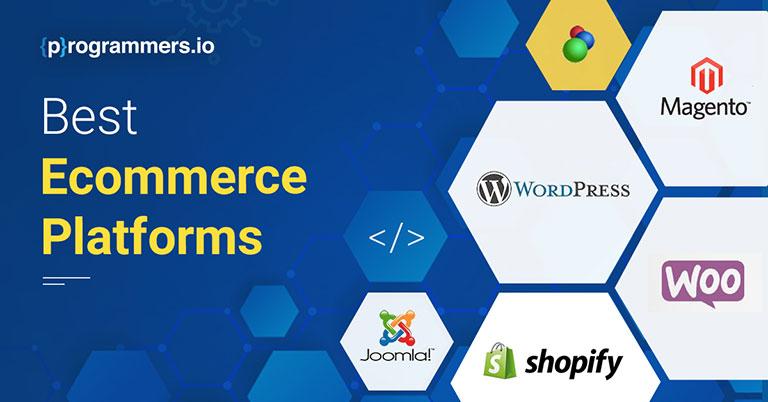
integrations and Customization: Finding the Perfect Fit
When choosing an eCommerce platform, it’s essential to consider how well it integrates with your existing tools and how customizable it is to meet your specific business needs. A platform that seamlessly connects with your favorite software can enhance productivity and streamline operations,allowing you to focus more on growing your business.
Here are some key integrations to look for:
- Payment Gateways: Ensure your platform supports popular payment methods like PayPal, Stripe, and Apple Pay to cater to various customer preferences.
- Shipping Solutions: Integration with logistics providers such as UPS, FedEx, or local couriers can simplify order fulfillment and improve customer satisfaction.
- CRM and Marketing Tools: Connect with platforms like HubSpot, Mailchimp, or Salesforce to manage customer relationships and enhance marketing efforts.
Customization is equally importent; a one-size-fits-all solution rarely meets all business demands. Look for platforms that offer:
- Theme Customization: The ability to tweak the design and layout of your store can definitely help create a unique brand identity.
- Custom Fields: Having the option to add custom fields to product pages ensures that you can present the information your customers care about.
- APIs and SDKs: If you have specific needs, robust APIs allow you to integrate third-party applications and create unique functionalities.
To give you a clearer picture, here’s a quick comparison of leading eCommerce platforms based on their integration and customization capabilities:
| Platform | Integrations | customization |
|---|---|---|
| Shopify | Extensive app store, supports multiple payment gateways | Custom themes, Liquid templating language |
| WooCommerce | Integrates with WordPress plugins, customizable payment options | Highly customizable with plugins and themes |
| BigCommerce | Robust API, built-in shipping and accounting integrations | Customizable checkout and product displays |
Ultimately, the right eCommerce platform should not only meet your current needs but also grow with your business. By prioritizing integrations and customization, you can create a tailored experience that resonates with your customers and sets your brand apart from the competition.

Mobile Commerce: The Best Platforms for On-the-Go Shopping
In today’s fast-paced world, mobile commerce has transformed the way consumers shop online. With the surge in smartphone usage, businesses are adopting platforms that cater specifically to the on-the-go shopper. Choosing the right mobile commerce platform is crucial for enhancing user experience and boosting sales. Here are some of the best options to consider in 2025:
- Shopify: Known for its user-friendly interface, Shopify offers a robust mobile app that allows merchants to manage their stores conveniently from their smartphones. Its customizable themes and easy payment integration make it a top choice for small to medium enterprises.
- BigCommerce: A solid contender, BigCommerce excels in providing built-in features that support mobile optimization. Its responsive designs ensure that your store looks great on any device, while advanced SEO tools help attract mobile traffic.
- WooCommerce: This WordPress plugin offers flexibility and customization options. with various mobile-responsive themes available, WooCommerce allows businesses to create a unique shopping experience that resonates with their brand identity.
When selecting a mobile commerce platform, consider the following features that can significantly enhance the shopping experience:
- Responsive Design: Ensure your platform supports designs that adjust seamlessly to different screen sizes.
- Fast Loading Times: A platform that prioritizes speed will keep customers engaged and reduce bounce rates.
- User-Friendly Checkout: Simplifying the checkout process can greatly decrease cart abandonment rates.
Let’s take a closer look at how these platforms stack up against each other:
| Platform | Mobile App | Responsive Design | Payment Options |
|---|---|---|---|
| Shopify | yes | Excellent | Multiple |
| bigcommerce | Yes | Very Good | Several |
| WooCommerce | No (Third-party apps) | Good | Varied |
Ultimately, the best platform for mobile commerce will align with your business goals and customer expectations. Investing in a solution that prioritizes mobile shopping not only enhances customer satisfaction but also drives revenue growth. So,take the time to explore these platforms and select one that fits your vision for future success.

Emerging Trends in Ecommerce Software you Shouldnt Ignore
The landscape of ecommerce software is evolving rapidly, and staying ahead of the curve is crucial for online retailers.One of the most significant trends is the rise of AI-driven personalizations. Consumers expect tailored experiences, and platforms that leverage AI can analyze user behavior to provide product recommendations that resonate. This not only boosts conversion rates but can also significantly enhance customer satisfaction.
Mobile Commerce Optimization is another trend that cannot be overlooked. As mobile shopping continues to grow, ecommerce platforms are focusing on seamless mobile experiences. This includes developing responsive designs, easy navigation, and mobile wallet integrations. Ensuring that your ecommerce site performs flawlessly on mobile devices will be a game-changer for sales and customer engagement.
Moreover, the integration of Augmented Reality (AR) is becoming a popular feature among ecommerce platforms. By allowing customers to visualize products in their own spaces, retailers can reduce return rates and increase confidence in purchases.imagine a customer using AR to see how a piece of furniture fits in their living room before buying—it’s a powerful tool for driving conversions.
Another key trend is the implementation of subscription-based models. Many consumers appreciate the convenience of subscriptions for products they use regularly. By incorporating subscription services into your ecommerce platform,you can foster customer loyalty and ensure consistent revenue streams.This trend is particularly effective in industries such as beauty, food, and health.
Additionally, the push for sustainability in ecommerce is gaining momentum. Platforms that emphasize eco-friendly practices, from packaging to shipping, are appealing to a growing demographic of environmentally conscious consumers. Highlighting these practices on your site can not only enhance your brand image but also attract a dedicated customer base.
Lastly, don’t underestimate the power of social commerce. With social media platforms becoming increasingly integrated with shopping features, businesses should prioritize their social media strategies. By leveraging platforms like Instagram and Facebook for direct sales, ecommerce businesses can tap into vast audiences where consumers are already engaging with brands.
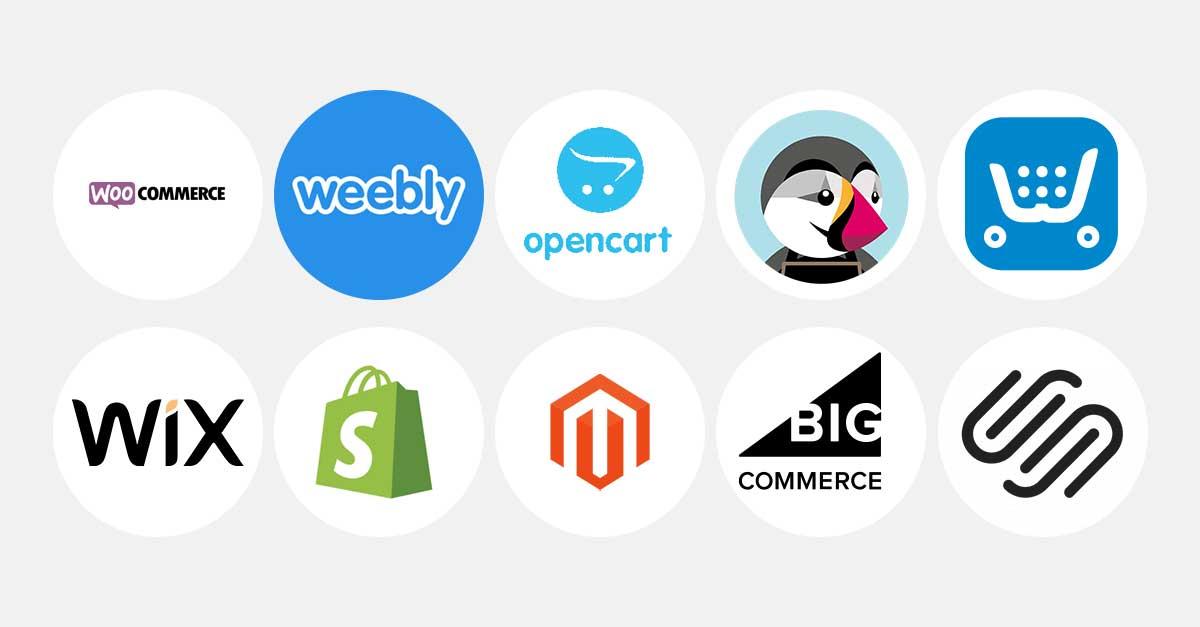
Final Thoughts: Making an Informed Choice for Your Ecommerce Journey
As you stand on the brink of selecting the right ecommerce platform, it’s essential to consider various factors that align with your business goals.Each platform offers unique features, pricing structures, and support systems that can make a significant impact on your overall success in the digital marketplace.
When evaluating options, think about your target audience and the type of products you plan to sell.Different platforms cater to specific niches and business models. As a notable exmaple, if you’re focused on high-volume sales of physical goods, platforms like Shopify or BigCommerce may provide the robust features you need. conversely,if you’re venturing into digital products or services,solutions like WooCommerce or Squarespace could be your best bet.
Consider the following attributes when making your decision:
- User-Friendliness: A platform that is easy to navigate will save you time and frustration.
- Customization: Look for platforms that allow you to tailor your store to reflect your brand’s identity.
- Payment Options: Ensure the platform supports a variety of payment gateways to enhance customer experience.
- Scalability: Choose a solution that can grow with your business as you expand your product line or customer base.
- Customer Support: Reliable customer service can be a lifesaver when you’re facing issues.
Moreover, pricing plays a crucial role in the decision-making process. It’s not just about the initial costs but also about monthly fees, transaction fees, and any hidden costs that could affect your bottom line. Below is a simplified comparison of popular ecommerce platforms based on their pricing and key features:
| Platform | Starting Price | Best For |
|---|---|---|
| Shopify | $29/month | Small to Medium Businesses |
| BigCommerce | $29.95/month | Scalable Solutions |
| WooCommerce | Free (plus hosting) | WordPress Users |
| Squarespace | $18/month | Creative Entrepreneurs |
Lastly, don’t forget to leverage available resources like reviews and case studies to see how others have succeeded with these platforms. Engaging with community forums can also provide valuable insights that may help you navigate your choices more effectively. Making an informed decision now will set the foundation for your ecommerce success story.
Frequently Asked Questions (FAQ)
Q&A: Best Ecommerce Platforms and Software in 2025
Q: What makes an ecommerce platform stand out in 2025?
A: Great question! In 2025, standout ecommerce platforms are those that prioritize user experience, seamless integrations, and advanced technology. They should offer customizable templates, mobile optimization, and robust analytics tools. Plus, with the rise of AI and machine learning, platforms that leverage these technologies for personalized shopping experiences are definitely leading the pack!
Q: Which ecommerce platforms should I consider for my new online store?
A: There are several fantastic options! Shopify remains a top choice for its ease of use and extensive app ecosystem. WooCommerce is perfect for WordPress users who want flexibility. For those looking for more enterprise-level solutions, BigCommerce and magento are unbeatable in terms of scalability. And don’t overlook newer entrants like Square Online, which offers fantastic integration with POS systems!
Q: What role does payment processing play in choosing an ecommerce platform?
A: Payment processing is crucial! you want a platform that offers multiple payment options – think credit cards, digital wallets, and even cryptocurrencies.In 2025, platforms like Stripe, PayPal, and Square have become essential for facilitating secure and fast transactions. Make sure the platform you choose makes it simple to integrate these services!
Q: How critically important is mobile optimization in ecommerce?
A: In 2025, mobile optimization is absolutely non-negotiable. With more consumers shopping on their phones than ever before, a platform that ensures your store looks great and functions smoothly on mobile devices is key to capturing sales. Look for features like responsive design and mobile-specific checkout options to enhance your mobile shopping experience.
Q: Are there specific ecommerce trends I should be aware of for 2025?
A: Absolutely! some notable trends include the rise of social commerce, where platforms like Instagram and TikTok are integrated with shopping features, and the increasing importance of sustainability in ecommerce. Consumers are more eco-conscious than ever, so platforms that support enduring practices will likely have a competitive edge. also, AI-driven chatbots for customer service are becoming a norm, enhancing customer engagement and support.
Q: Can I migrate my existing store to a new ecommerce platform?
A: Definitely! Many platforms offer migration tools to help you transition smoothly. However, it’s important to plan your migration carefully to avoid downtime and data loss. Look for platforms that provide comprehensive support during the migration process, including transferring product data, customer information, and order history.
Q: What should I keep in mind regarding pricing when selecting an ecommerce platform?
A: Pricing can range dramatically depending on the platform and features you need.Consider not just the monthly fees but also transaction fees, costs for additional apps, and any costs associated with scaling your business. It’s essential to find a platform that fits your budget while still providing the features necessary for your growth!
Q: How can I tell if an ecommerce platform is right for me?
A: The best way to determine if a platform suits your needs is to take advantage of free trials. Most platforms offer a trial period where you can test their features firsthand. Consider what’s most important to you—ease of use, customization options, customer support, or specific features—and see how each platform measures up!
Q: What’s the bottom line when it comes to choosing the best ecommerce platform in 2025?
A: The bottom line is to choose a platform that aligns with your business goals and provides a seamless experience for your customers. Look for scalability, robust features, and strong support. With the right platform, you can set your online store up for success in this ever-evolving ecommerce landscape!
Final Thoughts
As we wrap up our exploration of the best ecommerce platforms and software in 2025, it’s clear that the landscape is more dynamic than ever.With new technologies and consumer behaviors evolving at a breakneck pace, choosing the right platform can make or break your online business. whether you’re a budding entrepreneur or an established brand looking to pivot, these tools equip you with the features and flexibility you need to thrive.
Remember,the best ecommerce platform for you will depend on your unique needs,goals,and the audience you aim to serve. Take the time to evaluate your options, consider scalability, ease of use, and the integrations that will support your growth. The right choice today can set you up for success tomorrow.
So,are you ready to take your ecommerce game to the next level? Dive in,explore,and don’t hesitate to experiment. After all, the future of online shopping isn’t just about having a store; it’s about creating an experience that resonates with your customers and drives them to come back for more. start your journey now, and who knows? 2025 might just be the year your ecommerce dreams become a reality!

